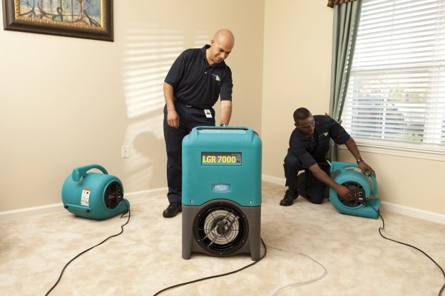
Types of Contaminated Water
Water damage can be a devastating and dangerous experience for any homeowner, whether it's confined to the basement or dispersed throughout the entire home. In order to stay safe, it's important to understand the different types of contaminated water and how each type might affect you.
Learn more about the effects of contaminated water and what steps you can take to keep your home and family protected with the following guide from the professionals at ServiceMaster Restore®.
What is contaminated water?
According to the Natural Resources Defense Council (NRDC), water can be contaminated by agricultural pollution, nutrient pollution, sewage and wastewater, oil pollution, radioactive substances and a range of other materials. Once contaminated, water can spread disease-causing bacteria and viruses to entire communities.
Contaminated water poses a serious threat to your health and property. After water damage has occurred, using the proper methods to clean and disinfect every area of your home is crucial. Since water damage can come from a variety of sources, the corresponding clean-up procedures and safety protocols that should be used will vary in intensity. For example, the process of restoring a home affected by damage caused by a broken pipe or overflowing sink will be drastically different than the process of dealing with a home impacted by severe flood damage.
Types of contaminated water
From dripping faucets to roof leaks, water damage is a common and potentially destructive issue many homeowners face. The Institute of Inspection Cleaning and Restoration Certification (IICRC) places contaminated water into three different categories:
Category 1
Water damage from a Category 1 classification comes from clean and sanitary sources like faucets, toilet tanks, malfunctioning appliances, melting snow or water pipes. Although Category 1 water is generally harmless to humans and pets, it can still cause significant risks to your home. If left untreated, Category 1 water may cause toxic mold growth in as little as 24 to 48 hours. Mold poses the risk of damage to your home's structure, your health and your belongings.
Category 2
Common sources of Category 2 water contamination include dishwashers, washing machines, showers, bathtubs and sinks. Also referred to as gray water or sullage, this type of water hasn't come into contact with fecal matter. However, Category 2 water may contain other contaminants that could induce illness if ingested. Category 2 water can turn into Category 3 in as little as 48 hours.
Category 3
Also called black water, Category 3 refers to wastewater beyond the trap. The most dangerous classification of water contamination, Category 3 water can come from raw sewage or even natural disasters such as floods. This type of water contamination is a haven for bacteria, pathogens, harmful chemicals, ground materials and disease-causing organisms.
When it comes to water damage, Category 3 water contamination is extremely dangerous and destructive. Due to the unsanitary conditions of the water, porous materials like drywall, upholstery and carpets is completely unsalvageable.
Contaminated water risks to your home
Category 1 and 2 water damage are often confined to the home. While Category 3 contaminated water can also happen at home, damage can occur on a much broader scale, such as a hurricane or widespread flooding. In fact, according to the Environmental Protection Agency (EPA), "The IICRC considers all water originating from sea water, ground or surface water, rising rivers and streams, and wind-driven rain from hurricanes and tropical storms to be Category 3."
If you have contaminated water in your home, clean-up and restoration should happen immediately to save as much as possible. Unfortunately, most items that have been touched by Category 3 water must be removed, as they cannot be saved. These items can harbor dangerous bacteria, viruses and diseases that can continue making your family sick, even after the water is gone.
How to protect your home from contaminated water damage
Since contaminated water can cause devastating damage to your home, it's best to leave the clean-up process to the professionals. An experienced restoration company like ServiceMaster Restore is available 24/7 every day of the year to provide a comprehensive assessment of the damage that's been done and work to restore your home as quickly as possible. We can also work with your insurance company to make the process less overwhelming for you.
Contact us today to learn more about our water damage restoration services.


